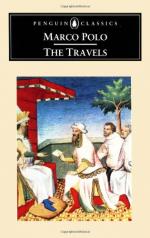55. BUSHELL, Dr. S.W., Physician to H.M.’s Legation at Peking. Notes of a Journey outside the Great Wall of China, embracing an account of the first modern visit to the site of Kublai’s Palace at Shang-tu. Appeared in J.R.G.S. vol. xliv. An abstract was published in the Proc. R.G.S. xviii., 1874, pp. 149-168.
56. PHILLIPS, GEORGE, of H.M.’s Consular Service in China.—Marco Polo and Ibn Batuta in Fookien (Chinese Recorder, III., 1870-1871, pp. 12, 44, 71, 87, 125); Notices of Southern Mangi, with Remarks by COLONEL HENRY YULE, C.B. (from the Journal of the Royal Geographical Society); Notices of Southern Mangi [Abridgment] (Proc. R. Geog. Soc., XVIII., 1873-1874, pp. 168-173); Zaitun Researches (Chin. Rec., V. pp. 327-339; VI. 31-42; VII. pp. 330-338, 404-418; VIII. 117-124); Changchow, the Capital of Fuhkien in Mongol Times, read before the Society, 19th November, 1888 (Jour. C.B.R.A.S., XXIII. N.S., n’o 1, 1888, pp. 23-30); The Identity of Marco Polo’s Zaitun with Chang-chau, with a sketch-map of Marco-Polo’s route (T’oung Pao, I., Oct. 1890, pp. 218-238); Two Mediaeval Fuh-kien Trading Ports, Chuean-chow and Chang-chow.—Part I. Chang-chow (T’oung-Pao, VI. No. 5, dec. 1895, pp. 449/463).—Part II. Chuean-Chow (Ibid., VII. No. 3, Juillet 1896 pp. 223/240, with 3 photog.).
57. WHEELER, J. TALBOYS. History of India (vol. iii. pp. 385-393) contains a resume of, and running comment on, Marco Polo’s notices of India.
Mr. Wheeler’s book says; “His travels appear to have been written at Comorin, the most southerly point of India” (p. 385). The words that I have put in Italics are evidently a misprint, though it is not clear how to correct them.
58. DE SKATTSCHKOFF, CONSTANTIN. Le Venitien Marco Polo, et les services qu’il a rendus en faisant connaitre l’Asie. Read before the Imp. Geog. Society at St. Petersburg, 6/18 October, 1865; translated by M. Emile Durand in the Journ. Asiatique, ser. VII. tom. iv. pp. 122-158 (September, 1874).
The Author expresses his conviction that Marco Polo had described a number of localities after Chinese written authorities; for in the old Chinese descriptions of India and other transmarine countries are found precisely the same pieces of information, neither more nor fewer, that are given by Marco Polo. Though proof of this would not be proof of the writer’s deduction that Marco Polo was acquainted with the Chinese language, it would be very interesting in itself, and would explain some points to which we have alluded (e.g., in reference to the frankincense plant, p. 396, and to the confusion between Madagascar and Makdashau, p. 413). And Mr. G. Phillips has urged something of the same kind. But M. de Skattschkoff adduces no proof at all; and for the rest his Essay is full of inaccuracy.




